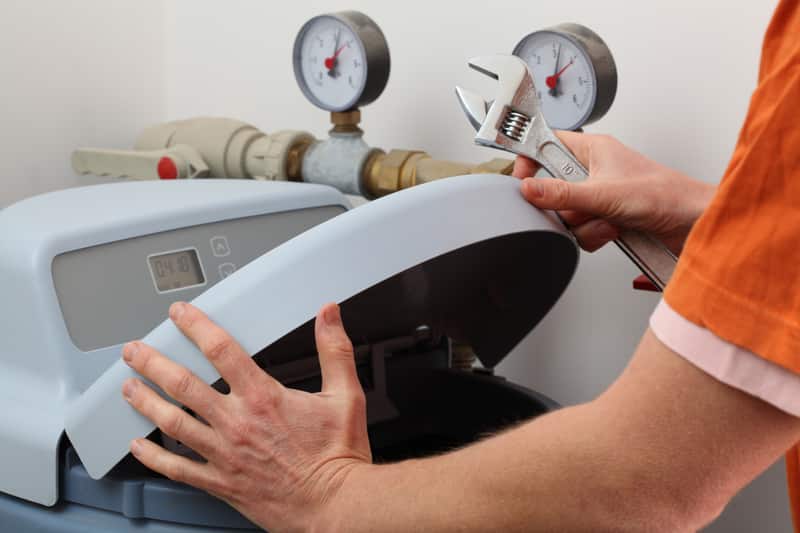
With hard water becoming a common issue for many households, it has become quite common to use water softeners. The water softeners help clear the hard minerals from the water to make it healthier to consume. The water softeners are usually combined with other salts in the brine tank. So, if you are using salt and wonder if you can overfill the water softener with salt or not, then here is what you should know!
Can You Overfill A Water Softener With Salt?
Overfilling the water softener tank with salt can result in salt bridging, which is known as the process of salt sitting on the top of the tank sticks together and won’t drop the tank. Filling the water softener tank with the correct level of salt before it gets extremely low is essential.
Once you understand the importance of using the right level of salt in the tank, you will know how it impacts the performance of the water softener. Having said that, you cannot overfill the tank with salt because it has various disadvantages that we will cover later.
The Recommended Quantity Of Salt In Water Softener Tank
The level of salt in the water softener tank should be between the level of 1/3 and 2/3. This is because the water softener needs this quantity of salt to create a sufficient amount of brine for the water softener to regenerate the resin within the softener tank. In case the salt level goes below the level of 1/3, the brine won’t be strong enough to develop the resin.
Many people don’t understand this, but brine from the tank is diluted as it passes through the resin, which is why it must be at full strength to ensure efficient resin regeneration. As a result, there will be hard water stains throughout the home. In addition, if there is still some iron left in the water, it will result in orange staining.
When Should You Add Salt To The Water Softener Tank?
It is important to check the water softener tank once a week to check the salt level. It will help you establish an idea about how much salt you are consuming on a regular basis, and you will be able to create a routine of adding salt to the tank and doesn’t get into the habit of overfilling the tank.
In simpler words, there is no specific timeline as it depends on the salt consumption, and regular checking of the water softener tank will help you develop a routine. Keep in mind that the water softener tank doesn’t get too empty before you add salt.
Outcomes Of Overfilling The Water Softener Tank With Salt
When it comes down to the filling the water softener tank, you should not overfill it with water as it can result in various issues, such as;
Salt Bridges
Adding excess salt to the water softener tank can result in the formation of salt bridges. These bridges are formed within the brine tank of your water softener. It’s defined as the hard crust that establishes between the water and salt in the tank, which makes it challenging for the water softener to regenerate. This entire process can damage the effectiveness of water softening.
To illustrate, it doesn’t allow the salt to dissolve within the water, which means saltwater or brine won’t form. The resin beads responsible for softening the water won’t work without brine. The increase in humidity and temperature can result in the formation of a salt bridge, and the outgoing water won’t be soft. It can be easily resolved by pushing the salt’s top layer with the broom handle as it will break the salt bridge.
Salt Mushing
Salt mushing is another outcome of excessive use of salt in the water softener tank. It’s an incredibly serious issue and results in the crystallization of dissolved salt within the tank. It creates a salty paste on the bottom of your brine tank. It is a thick layer and doesn’t allow the regeneration of softener. As a result, the water will be hard, and the tank will be blocked.
To remove salt mushing, you need to remove water from the water softener tank, remove the old salt, and add new salt. To summarize, you must be vigilant about the amount of salt you add to the tank.